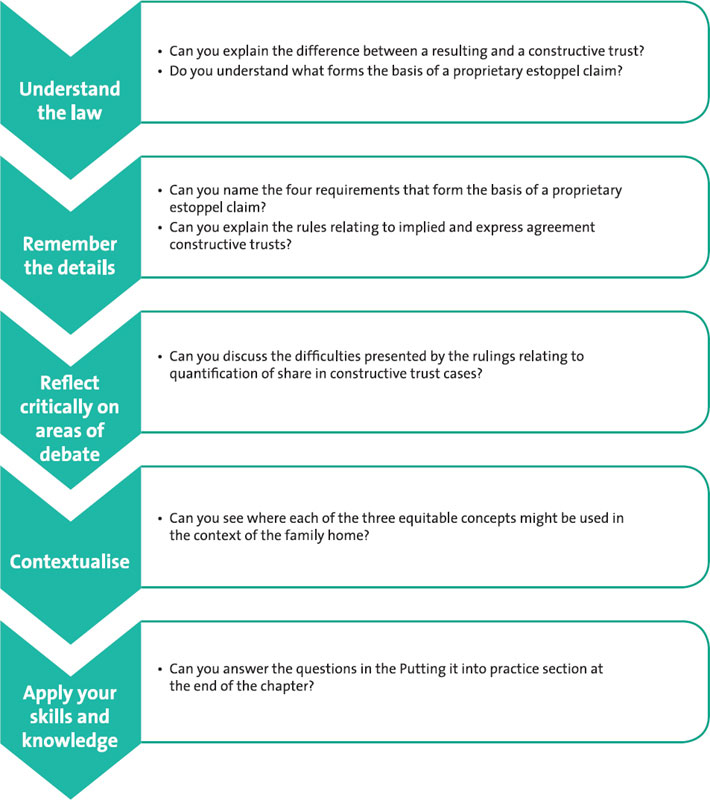Judicial Perspective Surrounding What Is A Constructive Trust Explained
Judicial Perspective Surrounding What Is A Constructive Trust Explained
Blog Article
Unveiling the Advantages of a Useful Trust Fund in Resolving Recipient Conflicts
The concept of a constructive count on becomes a crucial device in the detailed world of recipient conflicts, providing a nuanced option to disagreements that usually arise from wrongful residential property retention. By cultivating a fiduciary partnership in between events, this fair solution not only helps with swift resolutions however likewise serves to discourage potential misconduct. As we explore the diverse benefits of constructive trust funds, one may begin to examine exactly how these mechanisms can improve the landscape of estate disagreements and add to a much more equitable distribution of properties amongst beneficiaries.
Interpretation of Constructive Trust Fund
A positive depend on is often established by courts to address scenarios where one celebration has wrongfully gotten or kept residential property that rightfully comes from an additional (What Is A Constructive Trust). This legal concept is not a typical depend on, as it does not require the procedures commonly related to trust production, such as a written arrangement or the intent of the parties entailed. Instead, a positive depend on arises by operation of regulation, serving as a fair treatment to avoid unjustified enrichment
The courts impose a positive count on when it is established that one event holds home under circumstances that, in equity and great principles, ought to not allow them to retain it. Usual scenarios include deceptive activities, breaches of fiduciary task, or circumstances where a celebration has actually acquired residential property through incorrect methods. The positive trust therefore operates to protect the legal rights of the rightful proprietor by guaranteeing that the residential property is held for their benefit.
Once developed, the useful trust fund requires the party in belongings of the building to convey it to the rightful owner, therefore remedying the wrongful circumstance. This device emphasizes the legal system's commitment to fairness and justice in home disagreements, stressing the relevance of ethical conduct in ownership and transfer of possessions.
Advantages of Positive Trust Funds
Positive trust funds offer several significant advantages in lawful disagreements including residential or commercial property rights. Mainly, they offer as a fair solution, enabling courts to attend to circumstances where a celebration has wrongfully obtained or retained residential or commercial property that rightfully comes from an additional. This develops a framework for fairness, guaranteeing that the rightful owner is compensated and the unjust enrichment of the offender is curtailed.
Moreover, positive trust funds can accelerate resolution in disputes over estate assets, therefore lowering the frequently contentious and extensive litigation procedures related to conventional residential or commercial property disagreements. Their flexibility permits courts to tailor remedies to fit the certain situations of each instance, which can cause more sufficient results for all parties entailed.
In addition, useful trust funds promote openness and responsibility amongst beneficiaries and fiduciaries, as they require the last to act in the very best interests of the previous. This reinforces the honesty of fiduciary relationships, promoting trust and teamwork. By preventing transgression relevant to home ownership, positive depends on contribute to the general security of legal and monetary systems, making certain that home civil liberties are valued and upheld within society.
How Useful Counts On Work

In technique, when a constructive count on is imposed, the court determines the residential property concerned and establishes a fiduciary relationship between the parties involved. The party who holds the home ends up being a trustee, bound to manage it for the benefit of the rightful owner, referred to as the beneficiary. This relationship is not based on an official arrangement yet instead on the concept of equity, aiming to correct situations where one party's gain directly correlates with an additional's loss.

Instance Research Studies and Examples
When analyzing the practical application of constructive trusts, numerous situation research studies illustrate just how courts browse complicated circumstances involving unjustified enrichment. One remarkable situation is * Pettkus v. Becker *, where the Supreme Court of copyright developed a useful count on to navigate here rectify the unjustified enrichment of one celebration over one more in a long-term partnership. The court figured out that the contributions of one companion to the purchase of home justified the charge of a constructive trust fund, guaranteeing equitable circulation.
Another substantial example is * Gisborne v. Gisborne *, where the court enforced a useful trust to attend to the claims of brother or sisters over their deceased sibling's estate. The court recognized the payments made by the brother or sisters in keeping the household building, resulting in a choice that needed the estate to account for those contributions, therefore stopping unjustified enrichment.
These cases exhibit how positive counts on can effectively fix disagreements by focusing on justness and the avoidance of unjust enrichment. By taking a look at the specific contributions and scenarios of the parties involved, courts can apply positive counts on to accomplish just results, inevitably enhancing the equitable principles underpinning these legal systems.

Actions to Establish a Positive Trust
To develop a positive count on, numerous key steps have to be followed to make sure that the claim is validated and legitimately recognized. The claimant should demonstrate the presence of a fiduciary partnership or a situation that requires the imposition of a useful count on, such as scams, unjustified enrichment, or a violation of duty.
Second, it is vital to collect and existing engaging proof that sustains the case. This consists of documentation and testimonies that illustrate the situations causing the supposed wrongful retention of property or advantages by the trustee.
Third, the claimant should file an application in the appropriate court, articulating the grounds for requesting the charge of a positive count on. This application has to lay out the specifics of the partnership and the unjustified enrichment that requires the depend on.
Final Thought
In conclusion, useful trusts represent a crucial fair treatment in the world of beneficiary disputes, properly dealing with wrongful building retention and avoiding unjustified enrichment. Ultimately, constructive depends on advertise fairness among beneficiaries, making certain that rightful ownership is preserved and secured.
A positive trust is often developed by courts to resolve situations where one party has wrongfully gotten this or preserved residential or commercial property that truly belongs to one more.The courts enforce a useful count on when it is determined that one party holds residential or commercial property under scenarios that, in equity and good conscience, must not allow them to retain it. By preventing misbehavior relevant to property possession, constructive trusts add to the general security of lawful and economic systems, ensuring that residential property civil liberties are appreciated and maintained within society.
In method, when a useful count on is imposed, the court identifies the property in inquiry and establishes a fiduciary relationship between the events entailed. What Is A Constructive Trust. The court figured out that the contributions of one partner to the acquisition of property warranted the charge of a constructive trust, making certain fair distribution
Report this page